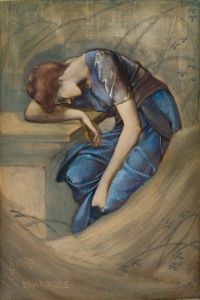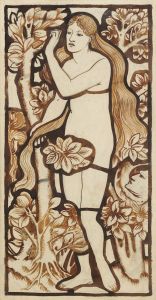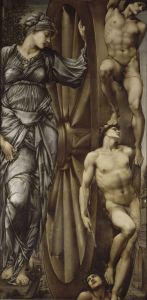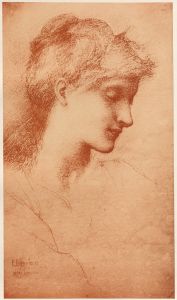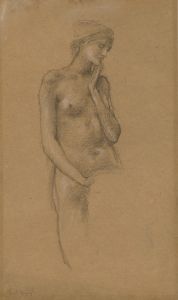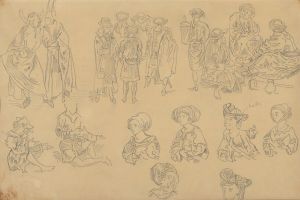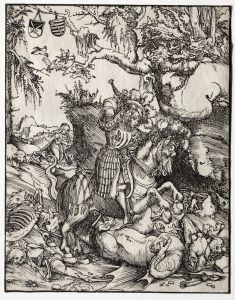
St Ursula
A hand-painted replica of Sir Edward Coley Burne-Jones’s masterpiece St Ursula, meticulously crafted by professional artists to capture the true essence of the original. Each piece is created with museum-quality canvas and rare mineral pigments, carefully painted by experienced artists with delicate brushstrokes and rich, layered colors to perfectly recreate the texture of the original artwork. Unlike machine-printed reproductions, this hand-painted version brings the painting to life, infused with the artist’s emotions and skill in every stroke. Whether for personal collection or home decoration, it instantly elevates the artistic atmosphere of any space.
"St Ursula" is a painting by the British artist Sir Edward Coley Burne-Jones, a prominent figure in the Pre-Raphaelite Brotherhood, an art movement that sought to return to the detail, intense colors, and complex compositions of Quattrocento Italian art. Burne-Jones, born in 1833 and died in 1898, was known for his romantic and often mystical subjects, and "St Ursula" is a testament to his fascination with medieval legends and religious themes.
The painting depicts St. Ursula, a legendary Christian saint and martyr. According to the most common version of her story, Ursula was a British princess who, along with 11,000 virgins, was martyred by the Huns in Cologne after refusing to marry a pagan prince. This legend became particularly popular in the Middle Ages and inspired numerous works of art and literature.
Burne-Jones's portrayal of St. Ursula is characteristic of his style, emphasizing ethereal beauty and a dream-like quality. The painting shows St. Ursula in a contemplative pose, often with a serene and otherworldly expression. She is typically depicted in a richly detailed gown, reflecting Burne-Jones's interest in medieval costume and his meticulous attention to detail. The background often includes elements that suggest a medieval setting, such as gothic architecture or lush, symbolic landscapes.
The painting is notable for its use of color and light, which are hallmarks of Burne-Jones's work. He often employed a muted, harmonious palette that enhances the mystical and timeless quality of his subjects. The delicate interplay of light and shadow in "St Ursula" adds to the painting's sense of depth and spiritual resonance.
"St Ursula" is part of a larger body of work by Burne-Jones that explores themes of martyrdom, sanctity, and the intersection of the earthly and the divine. His interest in these themes was influenced by his deep engagement with literature, particularly the works of Dante and Chaucer, as well as his collaboration with other members of the Pre-Raphaelite Brotherhood, including Dante Gabriel Rossetti and William Morris.
The painting is housed in the Tate Britain, one of the major repositories of Burne-Jones's work. It continues to be celebrated for its beauty and its embodiment of the Pre-Raphaelite ideals. Burne-Jones's "St Ursula" remains an important example of 19th-century British art, reflecting the period's fascination with medievalism and its quest for spiritual and aesthetic purity.
In summary, "St Ursula" by Sir Edward Coley Burne-Jones is a significant work that captures the essence of the Pre-Raphaelite movement. Through its meticulous detail, harmonious color palette, and evocative subject matter, the painting offers a window into the artist's vision of beauty and sanctity, and it continues to be admired for its artistic and historical value.







